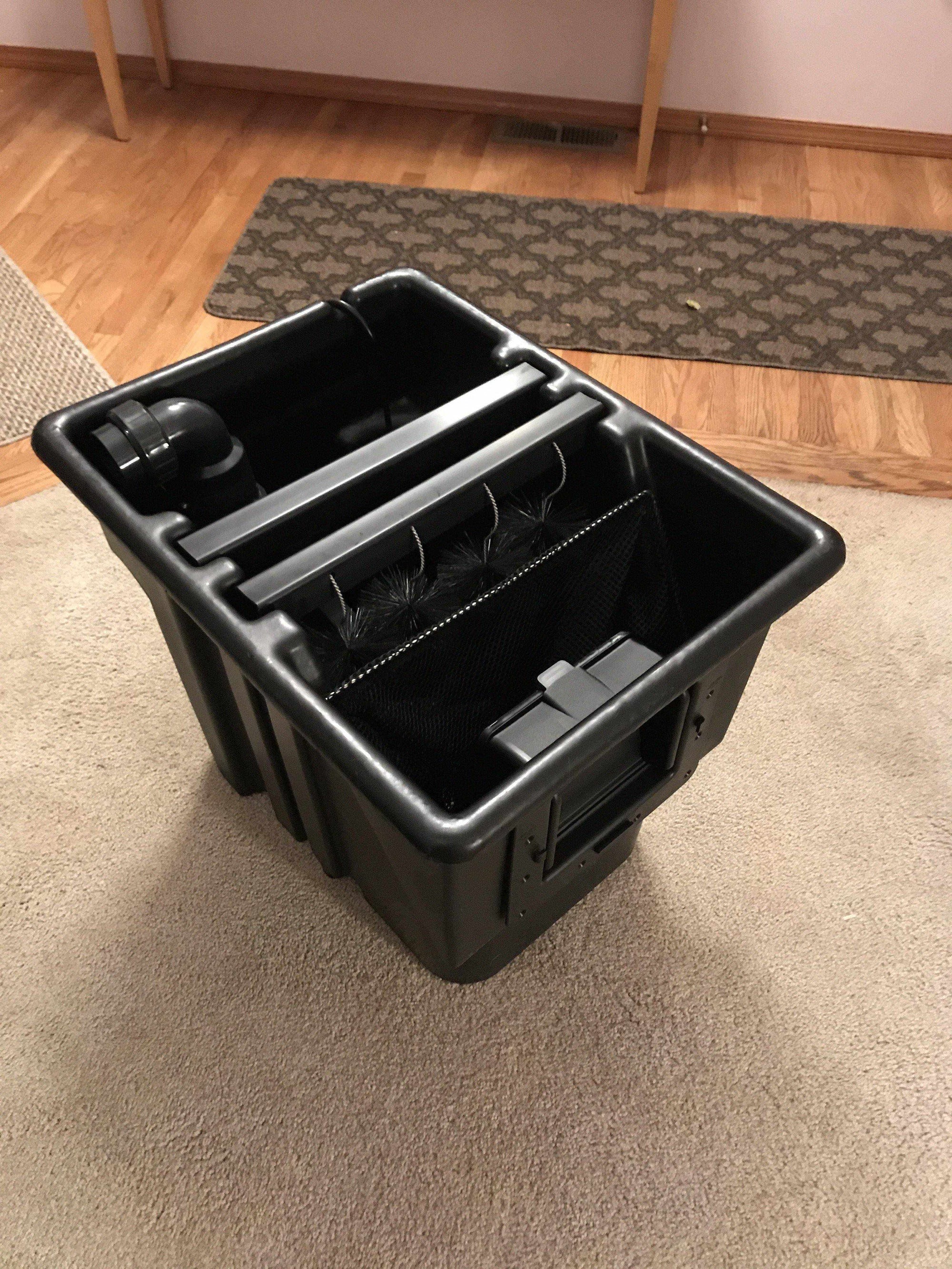So far, you have pondered the reasons to have a pond, understand what a pond is, found an ideal spot, have planned the general shape, size and volume of the main pool and can estimate the gallons of water needed to fill it (see previous articles). Now comes planning the components needed to service it.
Filtration: The next most important component is the filtration which needs to be sized to keep all that water in the main pool clean. There are many types of filters, but in general they can be broken into two main categories. 1) Mechanical filtration. This is simply separating debris from the water and trapping it. Leaves, twigs, and other floating debris will fall into your pond, mechanical filtration will separate this from the water. 2) Biological filtration. This is passing water through material where bacteria living within change the chemical makeup of the water removing harmful chemicals and exchanging them with non-harmful chemicals. You must have enough capacity of both kinds of filtration to keep your pond water clean AND healthy – which depends on the overall volume of your main pool.
Oxygen: Despite making their home in the water, fish, bacteria and other fauna in your pond need oxygen to live. Therefore your system needs to have components to introduce and dissolve oxygen into the water. This may be as simple as fountains, waterfalls, or a babbling stream that jumbles and splashes the water and moving the surface of the pond. Or, if these components are not an option, there are aerators that produce very fine bubbles. Placed in the bottom of your pond, it helps add O2 to the water especially in shallower, stagnant marshy ponds without a lot of movement. And let’s not forget aquatic plants; not only do they add oxygen to the water; they also remove harmful chemicals from the water too. Remember, your pool needs flushing, moving water to be healthy and oxygen-rich.
Pump: Filtration will not work unless the water is circulated through the filters. Stagnant water will be oxygen-deficient compared to moving water. This is accomplished with one or more pumps. The pump is the heart of the pond – without it, debris fills your pond, water dirties, toxic chemicals build up, oxygen levels plummet and decomposition stops. Like the filters, the pump must be sized to the total volume of water in your main pool. It has to move enough water to cycle the entire contents of the main pool completely approximately once an hour. There is wiggle room there, but that is a starting point. As this is central to your pond’s operation, you want to buy a VERY high-quality and reliable pump or pumps.
Plumbing: Tying all the components together is the plumbing. Just like in your house, it performs a very necessary and important task, but is seldom seen. An often overlooked component, this too needs to be sized by the volume of the pond (not just the pump). The pump may fail or be switched out, so you want the plumbing to handle the volume of the main pool. It is also important where to put in controls in your plumbing so that you can drain the pond, add water, divert water from filters to elsewhere for maintenance, and the very important check valves to keep water moving in only one direction so it cannot damage pumps or drain components when the pump is off. You also want these plumbing controls located in places that it easy to access, even after you conceal the pipes and plumbing.
Again, all these components need to meet (but better to exceed) the volume of the pond (never below the volume of the pond). Target 1-1/2 to 2 times the volume of the pond for all these components – you will not regret it. This will ensure the pond will be happy and healthy, stay stable and clean without a lot of fuss, and ensure the flora and fauna will thrive. In doubt? Always round up; never downward.
Previous Article: 03: The Pond Life – The Main Pool
Next Article: 05: Pond Planning – Secondary Components


1 comment
Anonymous
A-men on rounding up!